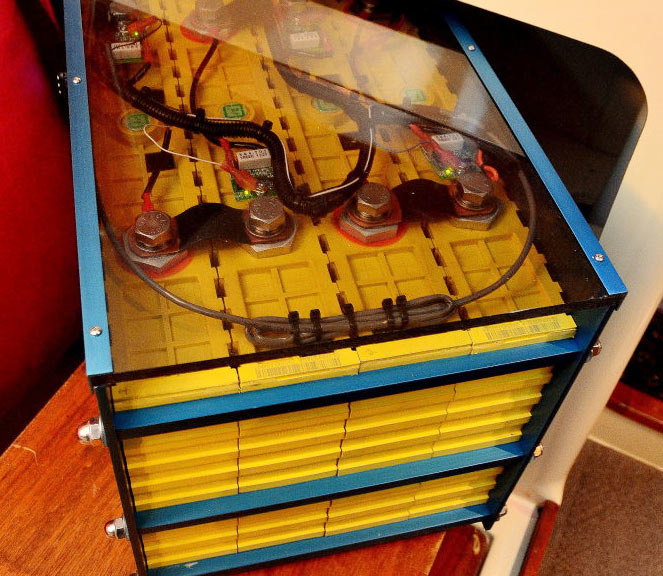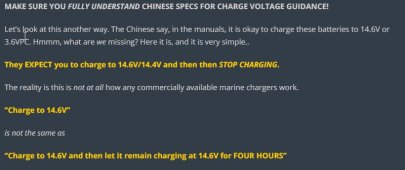Cronk
New Member
- Joined
- Dec 5, 2021
- Messages
- 15
in reading the very good article about charging LiPo4 drop ins (4 in parallel) on
 ALL CHARIUNG MUST STOP once current drops to <5% of bank capacity
ALL CHARIUNG MUST STOP once current drops to <5% of bank capacity
BNS that rely on voltage are not able to understand the history of the charging of the bank from various sources (alternator, solar, shorepower charger) and rely on voltage to indicate state of charge. This is unreliable with one or more charging sources in whats called the absorbtion phase (a misnomer in lipo world)
Drop in BMS is not programmable. The high cutoff is set to 14.8v (too high) instead of 14.7, which will impact cycle life of batteries, and has no capability for trtacking history and doing something intelligent with this information, l.ike denying all charging until bank drops to say 80% of capacity.
This results in batterys constantly being charged to 100% (every day)
I am looking for an externam "BMS" that can monitor/regulate all charging sources via say a relay and just cut out the bank leaving the LA to be charged constantly to 14.x volts or whatever.
It seems there is nothing available. The wakespeed WS500 (very expensive) will control the 160A alternator but not the solar. The solar charger will regulate the solar panels reasonably well but not the other sources.
In fact all i really need is a diverting relay that can monitor/remember current uptake history!
Perhaps its time for a Tensy project?

DIY LiFePO4 Batteries On Boats - Marine How To
DIY LiFePo4 On Boats Last edit;3/26/23:The base of this article was written a number of years ago (2010) but this does not mean the information here is outdated. We have been keeping it updated and have added to it when ever we had the time. This article deals
marinehowto.com
BNS that rely on voltage are not able to understand the history of the charging of the bank from various sources (alternator, solar, shorepower charger) and rely on voltage to indicate state of charge. This is unreliable with one or more charging sources in whats called the absorbtion phase (a misnomer in lipo world)
Drop in BMS is not programmable. The high cutoff is set to 14.8v (too high) instead of 14.7, which will impact cycle life of batteries, and has no capability for trtacking history and doing something intelligent with this information, l.ike denying all charging until bank drops to say 80% of capacity.
This results in batterys constantly being charged to 100% (every day)
I am looking for an externam "BMS" that can monitor/regulate all charging sources via say a relay and just cut out the bank leaving the LA to be charged constantly to 14.x volts or whatever.
It seems there is nothing available. The wakespeed WS500 (very expensive) will control the 160A alternator but not the solar. The solar charger will regulate the solar panels reasonably well but not the other sources.
In fact all i really need is a diverting relay that can monitor/remember current uptake history!
Perhaps its time for a Tensy project?







